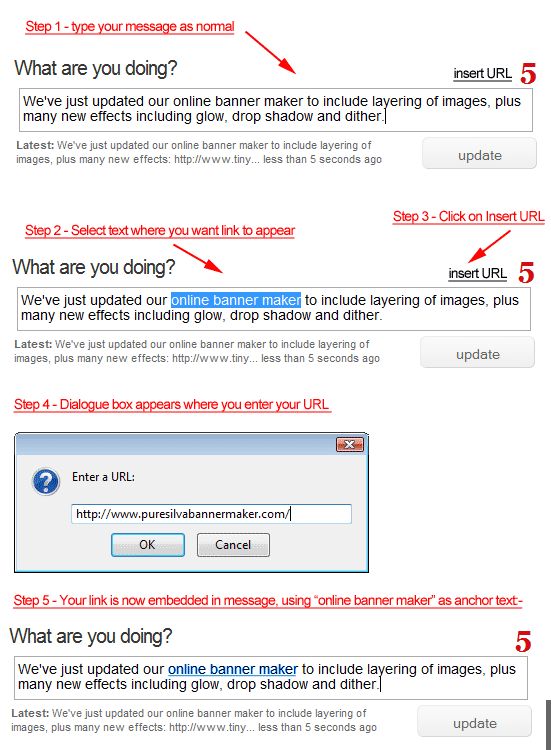Simple Solution to Twitter's URL Problem
Twitter is becoming an extremely popular means of communicating online, but a constant problem people have when sending a "tweet" (a message) are URLs - URLs take up too much of that precious 140 characters you're allowed per message.So to make the most of those 140 characters, people use a URL shortening service so their URLs look something like this:-

There are two problems with this:-
- I have no idea where that link is going to. It could be going to a malware site for all I know. Sure, if I trust the person who sent the message, I won't worry. But what if I'm using Twitter's search facility, and come across a tweet that's from a stranger, it would be prudent of me to distrust this link.
- No matter how short these URLs are, they STILL use up precious characters.
The Solution!
The solution is very simple, and I would be incredibly surprised if Twitter's developers haven't already mulled over this one, but anyway, I'd like to be Captain Obvious for a day : use anchor text, just like the example below:-
You can see the link is embedded within the message itself. The link is using some words as anchor text. The benefits of this are apparent: the link isn't taking up any characters, and if you roll over the link, you will see the actual location of where that link will take you since it doesn't need to be shortened, so you can decide whether the link is trustworthy more accurately (by seeing the actual URL).
Using rel="nofollow" (as Twitter is already using) will prevent SEO abuse (since the links won't count toward search engine rankings).
I suspect Twitter may have a hard database field limit of 140 characters on each message, which would make the above solution impossible, since the HTML not visible in the message still contributes to the number of characters. But it would be easy to resolve this by increasing capacity per message in the database, while maintaining the visible 140 character limit per message in Twitter (which is what Twitter users take as the actual limit anyway). You could also limit to one URL per tweet, and even a reasonable character limit for that single URL per tweet.
With businesses using Twitter more and more, it's essential you can send people to your site via a tweet giving full disclosure of the link, and even describing the link (in anchor text). Click through rates will drastically improve from Twitter if the above solution is used (IMHO!), making Twitter a much better place to do business than it is currently.
Share this article:
view my profile on Google+





